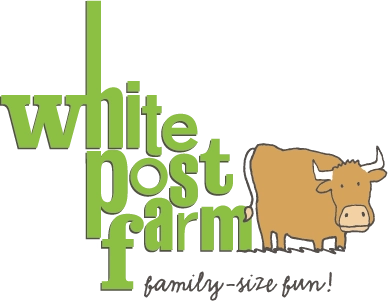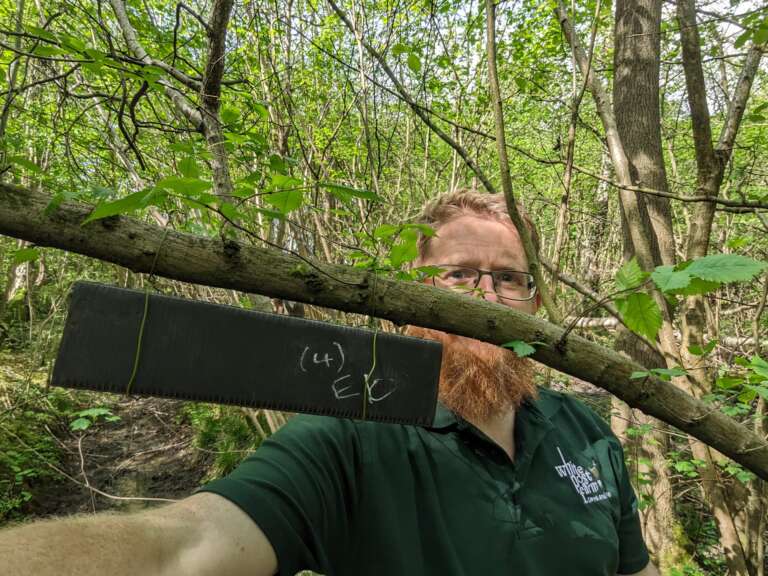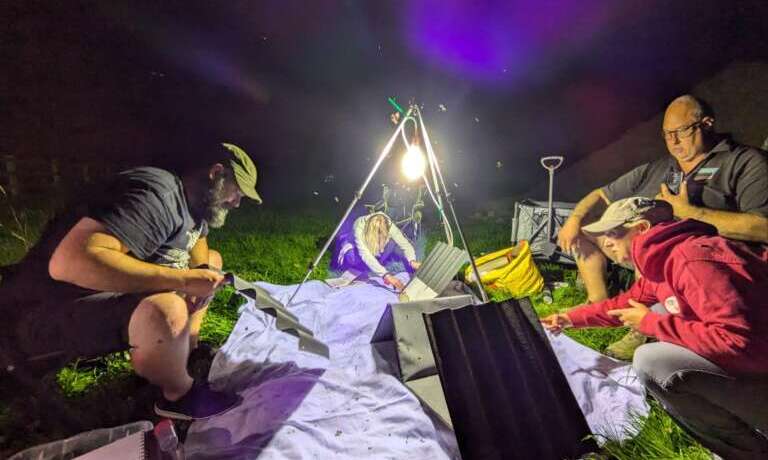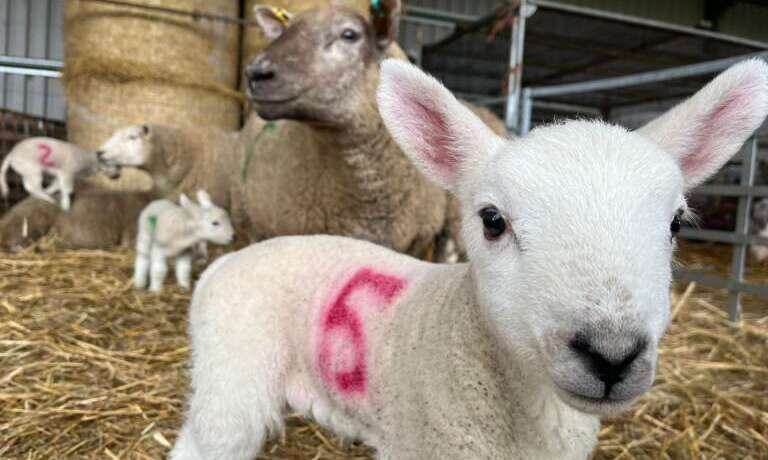Hazel dormouse in Dyscarr wood – Farmer Martin
On Sunday 5th May I was fortunate enough to participate in some hazel dormouse monitoring at Dyscarr wood. A Nottinghamshire Wildlife Trust owned site.
There was a small group of us consisting of 6 people led by Lorna the chair of the Nottinghamshire Dormouse group. This project is funded by Natural England and looks to survey several habitats that have historically had dormice inhabit. The day got off to an incredible start as running along the roadside hedgerows on the drive there was a stoat bobbing up and down.

Dyscarr wood is an ancient woodland with triple SSI status and over the 10 years there have been several reliable sightings recorded. This is a woodland with great dormouse potential as its habitat consists of hazel coppicing stools, bramble edges and plenty of dense scrub.
This dense scrub allows the dormice to make their nests entwined within branches these are like harvest mice nests except they tend to sit within it rather than be entwined.
Initially we spent the morning looking for signs of the hazel dormouse by looking out for hazel nuts scattered around the forest floor but nearly all the nuts had been chewed by squirrels. Dormice nibble the nut leaving a rounded edge, smooth finish and a circular bite mark around it.


Within the woodland there were several species that indicate an ancient woodland such as wood anemone, arc angel, borage, purple loosestrife and the strong distinctive smell of wild garlic.
Once Lorna was happy with the areas habitat, we then began distributing 20 footprint tunnels which are used as a reliable non invasive way of seeing what small mammals are present by the footprint they leave behind and 10 nest boxes within 3 areas. Nestboxes were specially adapted for dormice as the entrances were no wider than 14mm preventing small birds such as wrens from entering them. This allows all the dormice to enter although the largest ones that have been prepping and gorging themselves ready for the winter months and hibernation do struggle slightly.

Once all the traps were out they are then left for 2 weeks before Lorna and her team return and inspect the traps and nestboxes for signs they may have been used by the elusive dormouse.
We then got the chance to have a go with another piece of equipment that is now often used by licenced surveyors to find signs of dormice in woods, a thermal imaging camera. These can be used to scan areas of dense scrub that may have dormice nests in, the thermal imaging camera will then pick up signs of changes in temperate that signify a mammal is present and further techniques can then be used to confirm species present.

It was a fantastic way to spend a morning exploring a wonderful woodland with some extremely passionate and dedicated volunteers.
Want to learn more about one the UK Endangered mammal species, why not check out the great work the Nottinghamshire Dormouse group do here.



